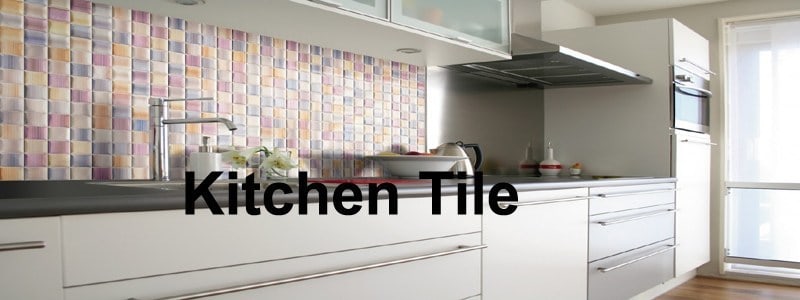| Kitchen tile isn’t what it used to be. Kitchen floor tile has come a long way through the years. There are a variety of styles, materials and patterns to choose from. Kitchen floors can be made of ceramic, stone, glass, and vinyl tiles. You can select a wide range of kitchen tile patterns to fit your decor, color scheme, and personality. |
Kitchen tile is one solution for kitchen floors, as well as other floors which are subject to moisture, dirt, heavy traffic, and frequent washing. Regardless of the material you choose, the tile look is great in a kitchen.
Kitchen floor tile is especially designed to withstand the special conditions of the kitchen. It offers:
- variety
- durability
- moisture resistance
- resistance to abrasion
- temperature change resistance
- affordability
But kitchen floor tile can be:
- cold to bare feet
- slippery when wet
Kitchen ceramic tile is made by pressing and shaping clays into tiles before firing them. The tiles are specially treated with a glaze that makes them strong and water-resistant. Kitchen stone tile is generally made or polished of pressed stone that has been glazed and treated so that it is durable and easy to clean. Most manufacturers take great care to make their kitchen tile products as fade-resistant and durable as possible, without increasing the price of the tile. This results in a tile that can withstand the pressures of a warm and high-traffic kitchen without it being too expensive for the average homeowner.
Kitchen tile is glazed to be especially hard. On a MOH (measure of hardness) scale, developed by the Porcelain Enamel Institute, kitchen tile often has a hardness of between 3 and 5. Tiles with a scale of 5 can be used in industrial or commercial uses, including in restaurant kitchens. Tiles with a hardness of about 3 are often the more affordable tiles that offer the perfect durability for a home kitchen.
Homeowners have used kitchen tiles to create easier-to-clean floors throughout the twentieth century. As early as 1910s, larger and more fashionable homes installed kitchen floor tile. By the 1950s, many North American kitchens were tiled. Throughout the twentieth century, a number of tile options, including kitchen vinyl and glass floor tiles were introduced as possible kitchen tile choices.
Kitchen tile does have some drawbacks. Kitchen stone tile, glass tiles, and ceramic tile, for example, can be quite cold under foot. If you enjoy walking into your kitchen barefoot, you may wish to consider kitchen vinyl tiles instead. Some tiles, including interior glass tile often used in kitchens, can be slick when wet. To ensure safety in the kitchen, it may be necessary to add a no-slip sealant to kitchen floor tiles. Another major drawback of kitchen tiles is the possibility of fading and chipping. Since kitchen tiles see a lot of abuse — frequent spills, dramatic temperature changes, high moisture, and frequent clean-ups — it is crucial to select the best kitchen tile that you can to ensure a durable floor.
Despite these drawbacks, today’s kitchen tiles have many advantages as well. They are easier to clean than many flooring options, for example, and this allows the kitchen to stay hygienic and safe. The kitchen tile patterns available are varied and quite lovely, allowing homeowners to create beautiful kitchens using various types of material, like kitchen stone, ceramic, vinyl, or glass floor tiles. Kitchen tile is more affordable and durable than ever before. Today, kitchen floor tile is made to be very scratch proof and fade proof, allowing customers to scrub their kitchen floors as much as they like, with no ill affects on the tile. Most kitchen floors are also designed to be easy to clean. A quick wipe with a mop and cleaner is all that is needed to keep most kitchen floors clean.
If your kitchen is looking dingy, try one of the new generations of kitchen tiles. These flooring options will help you preserve the hygiene of your home while making cleanup much simpler.
